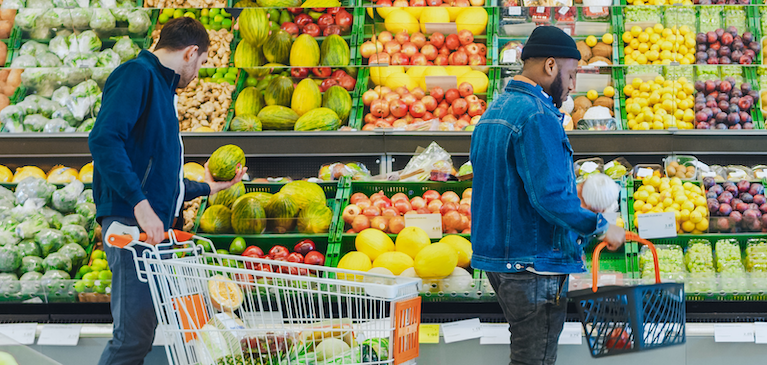
Our food supply has been very much in the news over the past several months. Our affordable, abundant food that fills the tens of thousands of grocery stores across the country was suddenly not as affordable nor abundant.
A myriad of external factors has led to this upset in our remarkable food supply system. These speedbumps should lead us to appreciate our producers of food and one would assume, especially as demand for food continues to grow, to carefully consider policies affecting our producers. However, that does not appear to be the case based on some recent global developments.
As the world’s population continues to grow (projected by the United Nations to officially reach 8 billion people on November 15, 2022), pressure to produce more food is only going to increase. On more than one occasion, we have shared the remarkable progress of farming and how our farmers are producing far more while reducing their overall “footprint.”
Agriculture Saving Humanity
In our spring 2015 article in Partners we stated, “By just about every measure, we are not just doing better as a society; we are doing remarkably better. Child mortality is falling, diseases are being eradicated, caloric consumption is rising, food is more affordable, and famines are becoming increasingly rare ... all while our global population has exploded. How have we accomplished these rather remarkable achievements? According to (Max) Roser (Our World in Data), ‘This could only be accomplished by modernizing agriculture around the world.’”
One of the earliest modernization processes was the Haber-Bosh Process that through temperature, pressure, and natural gas turn the abundant inert nitrogen into forms of fertilizer. How important is this technology? According to Rob Saik, a Canadian Agrologist and international consultant, “Every person on the earth owes at least half of the protein in your body to fertilizer.”
Nitrogen Nature’s Gift – Handle with Care
Nitrogen, as you may remember from your chemistry class is positioned as the seventh element on the periodic table. It is the most abundant gas in the atmosphere and essential for life on our planet.
Nitrogen as nitrates can cause environmental and health problems – we have discussed this several times in the past. Nitrogen in the form of nitrous oxide is a powerful greenhouse gas (GHG). Because of the global warming potential of nitrous oxide, some governments have zeroed in on nitrogen as “low-hanging fruit” to meet their GHG reduction goals.
Political Policy Affects Agriculture
World leaders in an effort to reduce anthropogenic GHGs have made commitments regarding nitrogen reductions that could (and have) lead to rather tragic results.
In the Netherlands, Dutch farmers have been protesting over a policy that would require some farmers to reduce nitrogen by as much as 70% in the next seven years. According to the BBC, “Dutch government proposals for tackling nitrogen emissions indicate a radical cut in livestock - they estimate 11,200 farms will have to close and another 17,600 farmers will have to significantly reduce their livestock.”
This is significant not just for Dutch farmers - but for the world. The Netherlands are the second-largest agricultural exporter only behind the United States.
Canada also joined this effort setting a goal of a 30% reduction in nitrogen in seven years. Farmers in Canada have protested including a “slow roll convoy” through the nation’s capital, Ottawa.
The most aggressive policy was carried out in Sri Lanka when the (now former) president imposed a nationwide ban on synthetic fertilizers and pesticides. The outcome was predictable as crops failed to produce enough to feed their nation and they were forced to import food at much higher costs.
According to Foreign Policy Magazine in the aftermath of the policy decision in Sri Lanka, “…half a million people have sunk back into poverty. Soaring inflation and a rapidly depreciating currency have forced Sri Lankans to cut down on food…as prices surge.”
Rob Saik, in extolling the benefits of technology in agriculture at a TEDx Talk said, “Do you believe agriculture can feed 9 billion people...that’s not the real question, the real question is will agriculture be allowed to feed 9 billion people.”
As our global population continues to grow so will the demand for food. Farmers can meet this growing demand. If the history of technological advancements is any indication, they can do so with an even smaller environmental and carbon footprint than in the past. We must embrace technology and politicians must work closely with agriculture to understand the impact of their decisions and policies. The stakes are too high for anything short of this. Scientists are still arguing about the true impact of mankind’s activities on the environment and climate, but it is a known fact that without food, economies and societies collapse.
ABOUT THE AUTHOR
Alan Hahn is an Environmental Scientist at
The Dragun Corporation in Farmington Hills, Michigan.
The opinions stated herein are not necessarily those of GreenStone Farm Credit Services.
To view the article in the online 2022 Fall Partners Magazine, click here.


